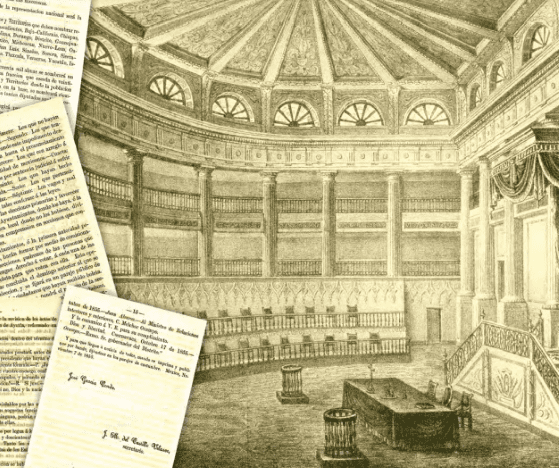How the Constituent Congress of 1856-1857 began
On February 18, 1856, the Constituent Congress began its work, which was to meet for a whole year to create the second federal and republican constitutional text in the history of Mexico; said Magna Carta would enter into force on February 5, 1857.

One of the most important turning points in the history of Mexican constitutionalism can be found in the era we know today as the Reform. Its importance lies in the fact that this meant a profound change that, during the second half of the 19th century, ended up demolishing the old colonial structures that, up to that moment, had remained in Mexico. The rise of the Mexican State, with the nuances with which it is currently known, began to take shape after the Ayutla Revolution.
After the American intervention and the loss of more than half of the Mexican territory, in the context of the Mexico-United States conflict, Santa Anna's conservative government was politically and militarily weakened.
In March 1854, the pronouncement of the Plan de Ayutla gave rise to the revolution known by the same name; originating in the southern state of Guerrero, promoted by Juan N. Álvarez, Florencio Villarreal, and Ignacio Comonfort, it sought to establish a republican, federal, democratic and secular state; this last feature was opposed to what was outlined in the Constitution of 1824 during the first republic.
The Plan of Ayutla, eminently liberal, sought to establish the guidelines to give an institutional channel to the pretensions of consolidating a civil Mexican State and promoted the limitation of the political and economic power of the church; in the social aspect, the Revolution of Ayutla offered to put an end to the organization of the estates that survived in Mexico and whose origin dated back to the three centuries of Spanish domination.
In the legal and political aspect, the proposal of the Plan de Ayutla focused on promoting the organization of a new Constituent Congress, whose task would be to allow the country to have institutions of an eminently liberal nature.
In October 1855, after the triumph of the Ayutla Revolution, Juan Álvarez was appointed provisional president and, during his short term in office, the Juárez Law went into effect, which sought the extinction of military and ecclesiastical jurisdiction, subjecting all the country's inhabitants to the civil courts. Likewise, during this period, the call for the Constituent Congress was launched.
In December 1855, Ignacio Comonfort took over the presidency from Juan Álvarez, and, during his first term, he took on the task of quelling the counterrevolutionary movement that broke out in Puebla. The first Organic Law of the Civil Registry saw the light of day during this period, with which the cemeteries would be secularized, and the Lerdo Law also came into effect; legal scaffolding with which the ecclesiastical goods would be disentailed.
On the other hand, on February 18, 1856, the work of the Constituent Congress began, which was to meet for a whole year to give birth to the second federal and republican constitutional text in the history of Mexico; said Magna Carta would go into effect on February 5, 1857.




